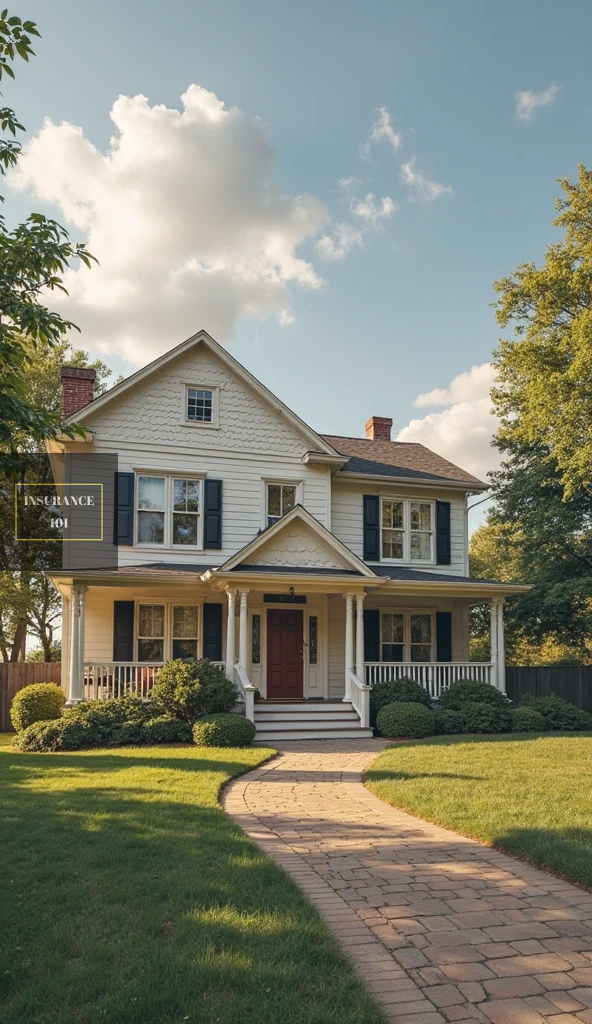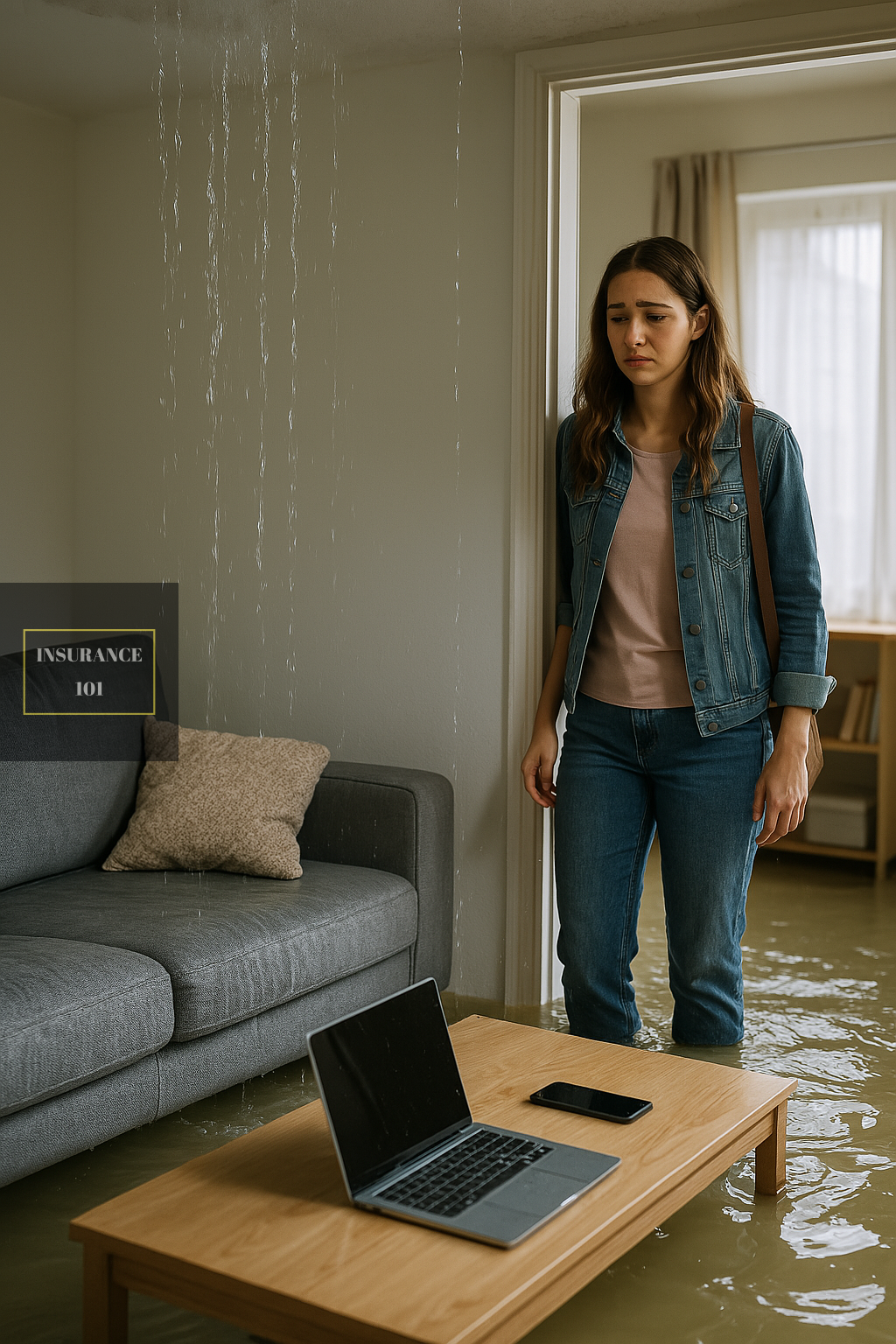When Disaster Strikes, Will Your Homeowners Insurance Cover Enough?
Suppose this: A windstorm floods your living room as it takes the roof off your house. You discover your policy does not cover wind damage—or the cost of temporary housing—as you rush to claim. You are not the only one. Over 60% of Policygenius‘ polled homeowners in 2024 said they didn’t completely comprehend their coverage until they needed it.
Most people consider a house to be their most valuable possession and biggest outlay of money. Still, many buy their homeowners insurance based more on cost than anything else, much like they chose their internet provider fast. That runs dangerous.
With professional insights, current statistics, interactive advice, and real-world case studies, this all-inclusive guide will lead you through all you need to know about selecting the appropriate homeowners insurance coverage in 2025. We will describe the important concepts, offer coverage calculations algorithms, contrast policy forms, and stress areas of error prevention. Whether your purchase is first-time or you want to change insurance, this guide is meant to guard you most importantly—at home.
1. Describe Homeowners Insurance
Homeowners insurance is a kind of property insurance that offers liability coverage should someone be hurt on your property in addition to financial defense against damage to your house and personal possessions.
Usually a normal insurance consists of:
- Dwelling—your house
- Additional buildings (shed, garage, fence)
- Personal property—that is, furniture and electronics—that
- Loss of use—that is, temporary residence should your house be unfit
- Personal liability—that is, harm or legal claims—here
- Medical reimbursements for others
When unplanned incidents like fires, theft, or extreme weather hit, this coverage becomes really vital.
2. Why, in 2025, Homeowners Insurance Is More Crucially Important Than Ever
Global temperature trends are changing. Natural disasters are growing increasingly common and severe. The National Oceanic and Atmospheric Administration (NOAA) reports that, just in the United States, 2023 saw 28 weather/climate crisis events with damages exceeding $1 billion per.
These disasters are predicted to become more localized but intense in 2025, calling for insurance that is both financially strong and spatially conscious.
“We’re seeing a change in how insurers evaluate climate-related risks,” says Mark Ellison, a consultant for Lloyd’s of London and licensed underwriter with 18 years of experience. “What used to be called a 1-in-100-year event is now happening every 10 to 15 years.”
Coverage under insurance go beyond mere legal formality. It’s a changing risk-management approach.
3. Fundamentals of a Homeowners Insurance Policy
A. Dwelling Coverage: Coverage A
Addresses actual structural damage to your house. It does not consider the land value.
Formula to project necessary coverage: Usually costing between $100 and $400 per square foot, the cost of rebuilding is square footage times local rebuilding cost per square foot.
B. Other Structures: Coverage B
Covers separate building like garages, gazebos, fences. Usually at 10% of house coverage.
C. Individual Property (Coverage C)
Guards household goods include appliances, gadgets, clothes. Usually half to seventy percent of dwelling coverage.
Use a home inventory app to log all you own.
D. Use Loss (Coverage D)
Pays for meals, interim accommodation, transportation, and lodging should a covered occurrence render your house un habitable. Usually 20% of dwelling coverage.
E. Personal Liability, or Coverage E
Should you find yourself liable for injury or damage to another, covers medical bills, settlements, and legal fees.
Minimum advised liability coverage is $300,000–$500,000.
F. Medical Payments (Coverage F)
Covers minor medical costs for visitors hurt on your premises. Range of limits is $1,000 to $5,000.
4. Real-Life Case Study: Insurance‘s Saving Grace
Meet Melbourne, Australia homeowner Emily Ross:
“Lightning struck my house in April 2023 and started a fire that wrecked the living room and kitchen. My policy covered everything, including two months of temporary renting living. For the policy, I paid AUD 800 yearly. My insurer paid for that occurrence over AUD 30,000.
Emily‘s account shows why thorough coverage is so important. She also had a scheduled jewelry rider who paid her AUD 5,000 for a broken heirloom necklace valued at.
5. How One Should Choose Appropriate Coverage Amount?
A. Rebuilding Expenses
Not market worth, but replacement cost should be your policy‘s reflection.
Rebuilding cost is home size (sq. ft.) times cost per square foot.
B. Value of Inventory Valuation
Record everything with tools like Sortly or Encircle. Add serials, pictures, and receipts.
C. Location-Based Hazards
Not far from water? Coverage for floods. In a zone of an earthquake? Endorsement of earthquakes.
D. Legal Prospection
Get a dog, pool, or trampoline. You’ll want extra protection against liability.
6. Typical Coverage Gaps to Alert You
Not Supported by Standard Policies and Their Suggested Add-Ons
- Flooding ← NFIP, or private flood insurance
- Earthquakes ← Earthquake Endorsement
- Engineer Backup → Engineer Backup Endorsement
- High Value Jewelry → Rider on Scheduled Property
- Home Devices → Cyber Liability Add-on: Cyberattacks
View the risk profile of your area on FEMA‘s Flood Map.
7. Riders, Endorsements & Add-Ons Just Explained
Rider: Little extra for particular hazards (such as musical instruments or antiques).
Legally enforceable policy amendment is endorsement.
Scheduled Property: Provides coverage for valuables over normal limits.
For instance, someone steals a $10,000 art work. Your regular policy might just pay $2,500. A scheduled property rider pays for everything.
8. Selecting the Correct Insurance Carrier
Main Points of View
- Financial Strength: Evaluate claims-paying capacity using AM Best.
- Claims processing depends critically on quick payouts and client satisfaction.
- Mobile claims, digital inventory support, and 24/7 service capability.
- Combining house and vehicle policies will save 10–25%.
Top Five Worldwide Home Insurers by 2025
- AXA: Global coverage, outstanding mobile app; $1,700 average premium
- State Farm: Best U.S. regional service at $1,450 average premium.
- Aviva: Easy policy customizing; $1,600 average premium
- Liberty Mutual: $1,560 average premium with multiple-line bundling savings.
- Allianz: $1,730 average premium combined disaster coverage
9. Top Mistakes to Steer Clear of
- Underinsuring Your Home: Coverage ought to line up with reconstruction expenses.
- Choosing Price Over Quality: Low premiums usually translate into inadequate service.
- Ignoring to change policy: renovations? Modern devices? Tell your supplier.
- Ignoring Liability Risks: A guest tripping could cause a lawsuit.
- Knowing what “exclusions” apply to your insurance will help you to skip the fine print.
10. Expert Interview: Fine Print Unpacking by Claims Adjuster
Senior Claims Adjuster Karen Mc Allister of Zurich Insurance:
Misunderstanding is the first problem we deal with. Though many homeowners believe “wear and tear” is covered, this is not. Policyholders should ask for a summary sheet, sometimes known as a “declared page,” which clearly Englishly describes every item.
Her main piece of guidance is Your agent should ask three questions to you:
- What dangers are omitted?
- My deductible is what?
- Exist any sub-limits for some items?
11. Predicts the Future: Homeowners Insurance Trends
2025 and Ahead
- AI Risk Modeling: Customized premiums grounded on predictive analytics
- IoT-Driven Policies: Discounts and risk data found in smart home appliances
- Instant rewards dependent on weather triggers—such as wind speed—are known as parametric insurance.
- Climate Adaptive Underwriting: Micro-climated regional pricing
By 2027, 1 in 4 households worldwide will choose smart insurance solutions, claims Swiss Re Institute.
12. Last Remarks
Your greatest major financial and emotional outlay is your house. Selecting appropriate insurance covers your valuable possessions and guarantees your peace of mind. Being insufficiently insured is a risk you cannot afford in 2025 and beyond.
Want customized suggestions and comparing tools? See our entire resource center at Insurance-101.com.
13. Vocabulary
- Dwelling Coverage: Covering your home‘s actual construction
- Rider: Optional inclusion of particular elements into your policy
- Endorsement: Official change to policy term
- Replacement Cost: Rebuilding cost at current rates
- Real Cash Value: Value less depreciation
- Loss of Use: Temporary relocation‘s related expenses
- Personal Liability: Legal defense should someone sue you
- Limit: Coverage for particular objects
- Parametric Insurance: Pre-set payout for particular trigger occurrences
- Cyber Liability: Addresses home network and smart device vulnerabilities
Discover more from INSURANCE 101
Subscribe to get the latest posts sent to your email.




3 thoughts on “Selecting the Correct Coverage for Homeowners Insurance”